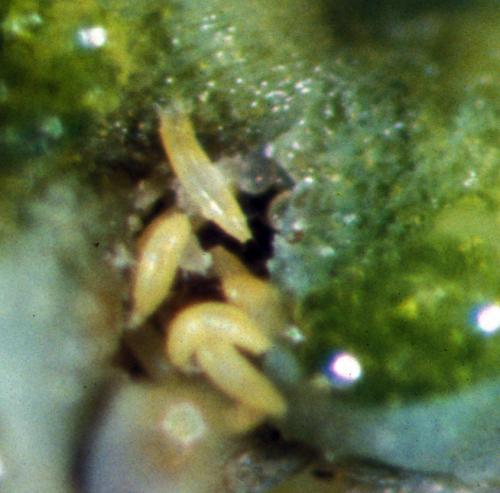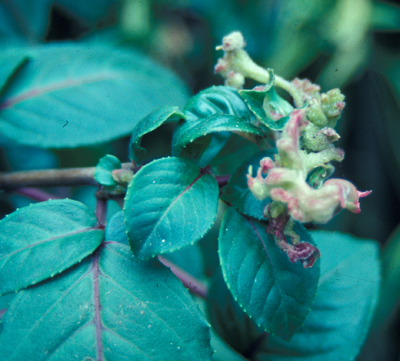Eriophyid mite
July 2, 2015
Sucking pests
Eriophyid mites feed deep within plant tissues, withdrawing plant fluids with their stylet-like mouthparts and injecting a toxin that deforms plant growth. Once eriophyid mite damage is evident, it is too late to save plants because the mites are already established in the plants. They tend to congregate in large numbers, feeding on all plant parts – buds, flowers and leaves.

Eriophyid mites are microscopic (less than 0.25 mm long), and spindle-shaped with elongated bodies. They resemble cigars with the head and legs on one end.
Management
Dispose of all plants exhibiting symptoms of eriophyid mite damage. Also, remove all plants within 1 foot of damaged plants. Eriophyid mite control with miticides may be difficult because they tend to be located in hidden, hard-to-reach areas.

Eriophyid mite feeding results in distorted, roughened growth on both leaves and flowers. Eriophyid mites may also cause swollen or thickened growth, leaf blistering and bronzing of infected leaves.
Print a PDF of this page: Eriophyid mite



 Print
Print Email
Email



